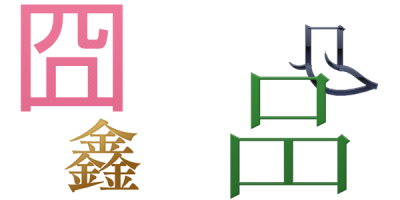
The question of whether or not four perspective ― “class,” “status,” “gender,” and “age” ― are enough when examining verbal characters could be asked in a different sense from that in which we have asked it so far (parts 73, 74, and 75).
One could point out that in the cases of the “Heian aristocrat”(1) (who uses maro wa…de ojaru ; I…de ojaru), “Westerner” (wakarimase-n; I don’t know), the “country folk” (ora, waganne; I don’t know), the “cat” (bengoshi ga nya, zaisan wo nya..;. the lawyer, meow, [did something with] the assets meow), and the “Pyo–nese” characters, the values of “class,” “status,” “gender,” or “age,” and how they are assigned, do not emerge. For example, one could argue that the difference between the “Heian aristocrat” and “cat” character cannot be thought of in terms of “class,” “status,” “gender,” and “age.” Rather the perspective of “their different species as living creatures” is necessary.
This is exactly right. I had no time to address this earlier, so I will take the opportunity to do so now. The verbal characters one can understand with the four perspectives of “class,” “status,” “gender,” and “age” are limited to those discussed up until now. I’m sorry to say, they cannot be used for the “Heian aristocrat,” “Westerner,” “country folk,” “cat,” or “Pyo–nese” characters.
My reason for bringing up the perspectives of “class,” “status,” “gender,” and “age” is that verbal characters can be grouped into two types, and I believe such grouping to be necessary.
The “Heian aristocrat,” “Westerner,” “country folk,” “cat,” and “Pyo–nese” characters belong to one of these two types.
The perspectives of “class,” “status,” “gender,” and “age” can be used to understand characters of the other of these types.
It is possible and necessary to divide verbal characters into these two types because their “deployment method,” “state of existence” and “spoken language” all differ. First, let’s look at some specific examples of “deployment method.”
For example, a person might jokingly use the “Heian aristocrat” character on the phone with his/her friend, and say: Yareyare, kore kara nagai kaigi no shikai de ojaru yo (Oh brother! I have to act as the moderator for a long meeting de ojaru yo). But it would normally be unthinkable for him/her to adopt this same character at the meeting and say: Dewa, minasan, kaigi o hajimeru de ojaru (Ok everyone, let’s get this meeting started de ojaru). Normally, s/he would deploy his/her “native” character (as we’ll call it for convenience), and say, E… dewa, sorosoro kaigi o o- hajimesasete itadakimasu, su– (Uh, I would like to start the meeting momentarily [su-](2)).
In other words, when considering the verbal characters that we deploy, there are times when we deploy our “native” characters, and times when we deploy other “provisional” characters.
For example, a young person may deploy his “native” “youthful” verbal character when speaking, but sometimes, in the context of play, also deploy a “senior citizen” style of speech (majime jakara noo; he/she’s so serious) or a “Heian aristocrat” style of speech (ashita mo kaigi de ojaru yo; tomorrow there’s another meeting de ojaru yo).
This “senior citizen” style of speaking may be the “native” style for a different person (for example, a senior citizen). However, there are no people who “natively” deploy the “Heian aristocrat” character. Aside from the “Heian aristocrat,” the “Westerner,” “country folk,” “cat,” and “Pyo–nese” verbal characters are only ever provisionally deployed, and cannot be maintained indefinitely.
(To be continued)
* * *









(1) See part 10 for more on the Heian aristocrat character.
(2) See part 30 for a discussion of the “su–” sound.